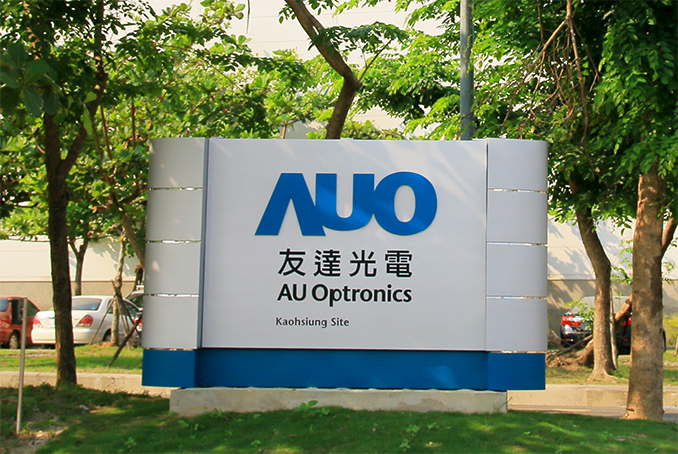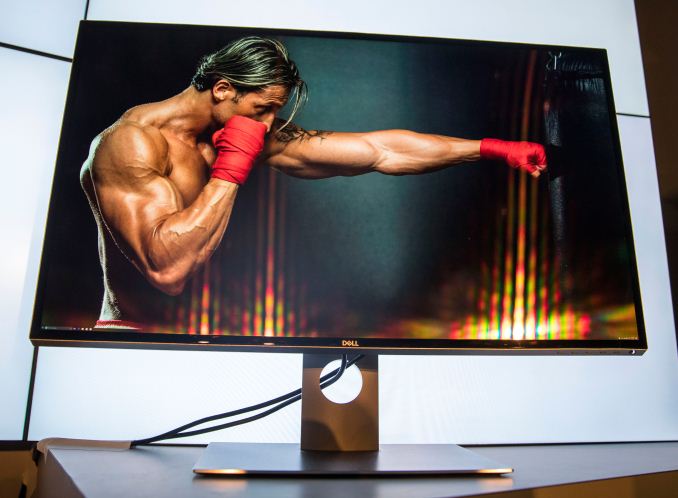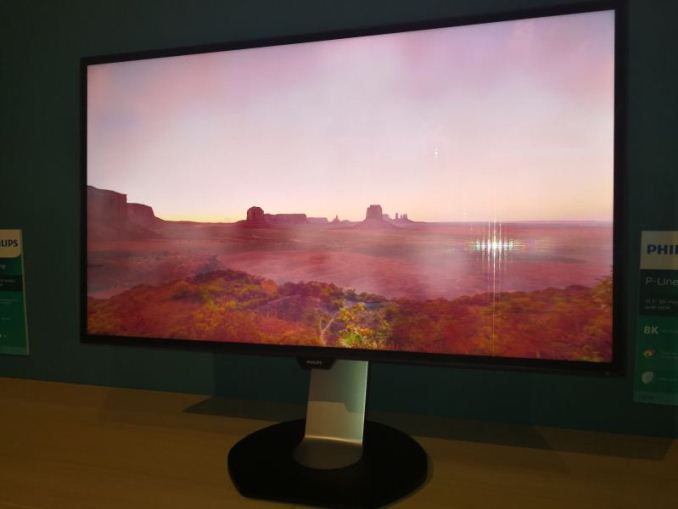AUO to Ship 8K UHD TV Panels in Coming Months
by Anton Shilov on February 23, 2018 4:00 PM EST
AU Optronics this week has announced plans to start shipments of 8K panels for large UHDTVs in the first half of 2018. The panels will enable TV manufacturers to produce “Super UHD” 8K TVs to compete against LG and Samsung later this year.
The lineup of panels featuring a 7680×4320 resolution will be aimed at ultra-high-end TVs and sizes will range from 65 to 85 inches, said Liao Wei-Lun, president of AUO’s video products business group, at a press conference. The high-ranking executive did not disclose other specifications of the panels, such as luminance and contrast ratio, but given their positioning, it is logical to expect their characteristics to be comparable to 8K UHDTVs to be offered by LG and Samsung.
Multiple TV makers demonstrated various 8K UHDTVs at various trade shows in the recent years, but so far no one has started to sell them. Given the lack of content, it is hard to expect high demand for 8K televisions in the next couple of years, aside from the halo factor - nonetheless, AUO expects 8K panels to account for 10% of its '65-inch and above' panel shipments in 2020. The presumably high-cost of the panels would indicate that in terms of unit shipments this might still be a low-ish number. However, as with 4K displays, someone has to release 8K TVs to stimulate content providers to offer appropriate material. At this year’s CES, Samsung demonstrated its Q9S, its first commercial 8K TV-set, but it did not announce its pricing or availability timeframe. LG and Sony also demonstrated their 8K TVs at CES 2018, but nothing is clear about their plans regarding these products.
Since AUO intends to start mass production of the 8K panels for UHDTVs in the coming months, it is highly likely that it has customers willing to use them for their products already. Because we are talking about volume manufacturing, it is likely that AUO’s partners have already developed their UHDTVs based on the early development panels and we are going to see AUO-based 8K UHDTVs later this year.
With Samsung, LG, Sony and various AUO partners onboard, it looks like 8K UHDTVs will finally start to be commercialized this year.
As for 8K displays for PCs, Dell is currently the only company to offer an 8K monitor (this one is based on a panel from LG, so the latter might introduce its own 8K display at some point). Philips last year promised to start shipments 328P8K monitor in 2018, so expect the product to hit the market in the coming months too.
We saw a number of the 8K PC displays last year at various shows:


Left: Dell 8K, Right: Philips 8K
Related Reading
- Philips Demos 328P8K: 8K UHD LCD with Webcam, Docking, Coming in 2018
- Cosemi Announces 328-Feet ‘8K-Ready’ OptoDP Active DisplayPort 1.4 Optical Cable
- Dell’s 32-inch 8K UP3218K Display Now For Sale: Check Your Wallet
- Dell Announces UP3218K: Its First 8K Display, Due in March
- CEATEC 2016: Sharp Showcases 27-inch 8K 120Hz IGZO Monitor with HDR, also 1000 PPI for VR
Source: DigiTimes










29 Comments
View All Comments
javishd - Friday, February 23, 2018 - link
Really hope they make a 43" one!Hurr Durr - Friday, February 23, 2018 - link
How nice.When will they start shipping decent 4k panels?
Batmeat - Monday, February 26, 2018 - link
^____ This.... Give me a decent 4k monitor/TV with 120hz refresh HDMI 2.0aBatmeat - Monday, February 26, 2018 - link
https://www.cnet.com/news/samsungs-galaxy-s9-mwc-2..."> HEREmckirkus - Friday, February 23, 2018 - link
This resolution is somewhat ridiculous when ESPN is still broadcasting at 720p. I think they should stop the resolution arms race and focus on getting HDR right and content distribution sorted. 4k noticably better than 1080p if you're close enough, I have a 65'' 4k TV. But 8K? This is getting crazy.Stochastic - Friday, February 23, 2018 - link
Also, when it comes to sports, the benefits of higher framerate are arguably greater than higher-resolution once you get to 4K.Lolimaster - Friday, February 23, 2018 - link
Not only HDR or other gizmos, FOCUS on image quality, better compression, use of HEVC.Many so called "HD" 720p look like crap.
As you say what's the point of upping res when TV cable, where most people use their TV's for, is 720p or 1080i and most of the time still using MPGE2... and interlaced.
zodiacfml - Friday, February 23, 2018 - link
Could be great for displaying high res still images. Other than that, I don't see any use for it.wr3zzz - Friday, February 23, 2018 - link
I bet the customers are Chinese TV brands. Koreans knocked off the Japanese premium in TV by going all out on 1080P when Japanese brands were still content on matching resolution with content (720P).Sancus - Friday, February 23, 2018 - link
It's easy to pump out more pixels. It's hard to compete with OLED contrast, colors and image quality.